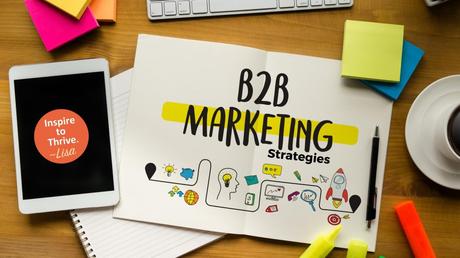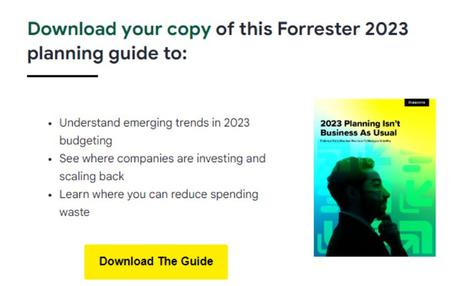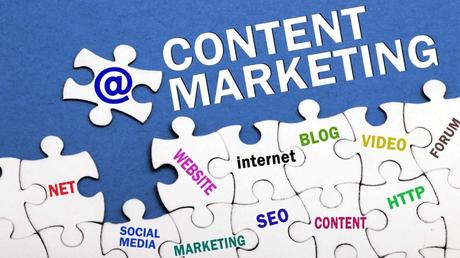
Marketing to a business takes a different route than marketing directly to customers. They target multiple audiences (from C-suite executives to CEOs), and their customers largely respond to logic than emotions. This makes the B2B marketing strategies landscape a bit more challenging than B2C. The B2B marketing strategy has a longer sale cycle and is more of a long-term commitment.
Needless to say, the strategies you see working for B2C businesses will not necessarily fit your B2B marketing objectives.
Thankfully, succeeding at B2B marketing isn’t a far-fetched notion anymore with the availability of digitally evolved tools and techniques. All you need is the right strategy and the right mindset to be able to execute ROI-driven marketing.

This article walks you through the top ten strategies you must leverage today to stay in the game and flourish.
1. Email Newsletters Are Evergreen in B2B Marketing Strategies
Unlike B2C email campaigns, B2B emails perform better when they offer thought-leadership and valuable content. Typically, sharing industry trends, how-to guides, webinar invites, and more to help subscribers grow their business is the best way to gain a loyal following.
For example, see how Forrestor, a market research company, offer valuable insights in the form of reports and guides to their list.
 Get the Forrester guide for marketers.
Get the Forrester guide for marketers.
Source
Some best email-marketing practices for you:
- Segment your list into their role—users, buyers, decision-makers, administrators, and decision influencers.
- Send targeted newsletters to each group based on their interest. For example, the users will be more concerned about the ease of use, while the buyers will think about the product’s ROI.
- Create newsletters based on the buyer’s journey. For example, an awareness stage subscriber will benefit from a how-to guide, while case studies will fit the bill for someone at the decision-making stage.
2. SEO and Link-Building Work Like a Charm
SEO is still super-relevant today and helps you establish your website’s presence online. However, Google has constantly been upgrading its algorithm to improve the quality of results it shows on the SERP—and creating ‘SEO-friendly’ content won’t just suffice anymore.
What’s more relevant today is creating high authority and thought-leadership content that helps you gain an edge over the competition. Focus on on-page, off-page, and technical aspects of SEO to leave no stone unturned to impress the SERP.
- Find relevant and high-performing keywords to target
- Understanding the searcher’s intent to create valuable content using the keywords
- Aim to get quality backlinks from high-authority websites to improve the authority of your site
- Download your site’s index coverage report and analyze the pages with technical errors and rectify them
Generally, link-building is far more exhaustive to be handled by a single person, and hiring someone new isn’t a feasible option. Instead, have a B2B link-building agency do this job for you—so you and your team can mainly focus on on-page SEO tasks while experts handle your off-page SEO.
Besides that, pay special attention to all SEO emerging trends, such as clearing glossary pages, FAQ schemas, optimizing for voice SEO, and so on, to stay relevant.
3. Create a Strong Content B2B Marketing Strategy
Like email marketing, B2B content marketing mainly focuses on thought leadership and building authority. People don’t just buy a product because they find it appealing through an ad. They go through a long journey before they make up their mind about purchasing.
Content Marketing is what makes them cross that bridge. Unlike B2C marketing, which mainly relies on social media campaigns, a B2B content strategy is based on blogs, whitepapers, webinars, reports, and LinkedIn marketing.
- Create long-form extensive guides to solve a problem your target customer faces
- Get in touch with your sales rep to understand the pain points of your customers
- Create knowledge content around your product to help your customer use them better, like how Notion has done on LinkedIn.
- Leverage video content and create hyper-focused videos to bring more prospects in
- Set up distribution channels for your content, including social media and emails, and try to get more coverage by outreaching big publications
 Use content marketing in your B2B marketing strategies.
Use content marketing in your B2B marketing strategies.
4. PPC Campaigns For The Win
With ioS updating privacy, and Google ending third-party cookies support by 2024, aim to collect first-party data using PPC lead gen and email listing campaigns. It’s how businesses can capture their leads fast and create hyper-targeted campaigns to raise their brand awareness.
However, don’t expect the conversion to happen instantly. As the sales cycle is longer with a B2B audience, it often takes 3-6 months before you actually see some ROI.
Instead of only marketing your products through an ad campaign, garner attention by promoting a whitepaper or report.
Ensure your landing page is on-point, fluff-free, and intuitive to tempt your prospects to take action fast.
As the sales cycle is longer with a B2B audience, it often takes 3-6 months before you actually see some ROI. #contentmarketing
Click To Tweet
5. Influencer Marketing Is Worth Exploring
If you think influencing marketing is so B2C, you’re mistaken. It is, in fact, proving to be as important for B2B as for B2C. Especially when the average B2B buyer is more savvy, following the conventional marketing strategy isn’t enough.
People (even the group of decision-makers in a company) trust recommendations from someone who has been there and done that.
Why? Influencers have the power to present arguments that your target customer resonates with. Moreover, they open doors for you to tap into their invaluable network that would have been difficult to reach otherwise. Some of the most popular influencer marketing campaigns are webinars, blogs, interviews, social media posts, and live videos.
Here’s how to find your ideal influencer:
- Make sure you know your buyer’s persona deeply
- Based on this data, you’ll know what kind of content you need to create to engage with them
Remember, here, the audience size doesn’t matter as much as the audience’s relevance.
6. Case Studies Are The Way To Go for B2B Marketing Strategies
Case studies are a gold mine in a B2B landscape. They not only add credibility to your business but also help generate leads. It’s a way of assuring your prospects that you understand your customer’s needs and will go above and beyond to help them attain desired results.
Here’s how to develop high-converting case studies:
- Determine the goal: Not all case studies focus on sales. Some are created to generate leads or to expand into a new market.
- Interview the customer: Select a customer that fits your goal and understand their journey before and after using your product. Understand the significant benefits your product brought to them.
- Write the case study: Make it as engaging as possible with visuals, flow charts, graphs, tables, and infographics.
- Start with a general statement of the current situation of the customer
- Describe their pain-point
- Talk about why they chose your product
- Explain how you helped them solve it
- Showcase the proof that your product worked
 Include case studies in your content marketing plan.
Include case studies in your content marketing plan.
As an example, see how HubSpot explains how their client benefited from using their CRM to expand their business.
7. Marketing Automation For More Productivity
Automation is vital when you’re burdened with tasks and don’t want to overlook marketing efforts.
Examples of marketing automation in practice:
- Follow-up emails after a prospect have visited and left your product page
- Workflow to help your audience accomplish a goal—completing a tutorial made by you
- Setting up nurture emails for a campaign
- Trigger notification to internal teams whenever a prospect takes action
- Automating report generation and sending them to the team
- Lead scoring to qualify whether they fit your buyer’s persona
- Developing creatives for multiple channels and launching them on the go
8. Add Referral Marketing To The List
Referral programs are a sure-shot way to persuade a target customer to purchase word-of-mouth. It’s a tactic where a customer promotes your product and shares a discount code—in return, they receive some incentives.
Here are steps to consider for creating a successful referral program:
- Make the messaging loud and clear
- Design a lead gen form
- Personalize the experience
- Market your referral program and automate it
9. Shift Your B2B Marketing Strategy To Target The Next Generation
Millennials account for 75% of the global workforce today. They’re involved in decision-making and have strong opinions about the effectiveness of B2B processes.
- They like to see quick responses in live chats
- The mobile experience is one of the first factors they notice
- They are more tech-savvy
- Millennials like to see a story or cause-driven marketing in effect
- They don’t like to beat around the bush
- Millennials incline toward visual content
 Get ready to target the next generation for your B2B marketing strategies.
Get ready to target the next generation for your B2B marketing strategies.
Base your B2B marketing decision on these points are you’re good to go.
A personalized outreach message can do wonders when you know a buyer up close, including the factors influencing their buying decision and preferences.
Here are some best practices:
- Know their revenue, target market, employee count, product, and everything important about their business
- Note down 2-3 of their daily responsibilities and analyze how your business can help them manage those
- Know their long-term goals and how you can provide long-term benefits
- Determine the best channel—email outreach is a great way to start
- Personalize your message and make them feel like you’ve spent some time researching them
Key Takeaways For B2B Marketers
B2B marketing isn’t supposed to be hard. With the right tools and techniques, you can very well ace it. However, the key to success is to deeply understand your target market and everyone involved in decision-making.
Additionally, understand what your competitors are doing and what the market leaders are discussing, and you’ll see your marketing efforts bringing you results.

